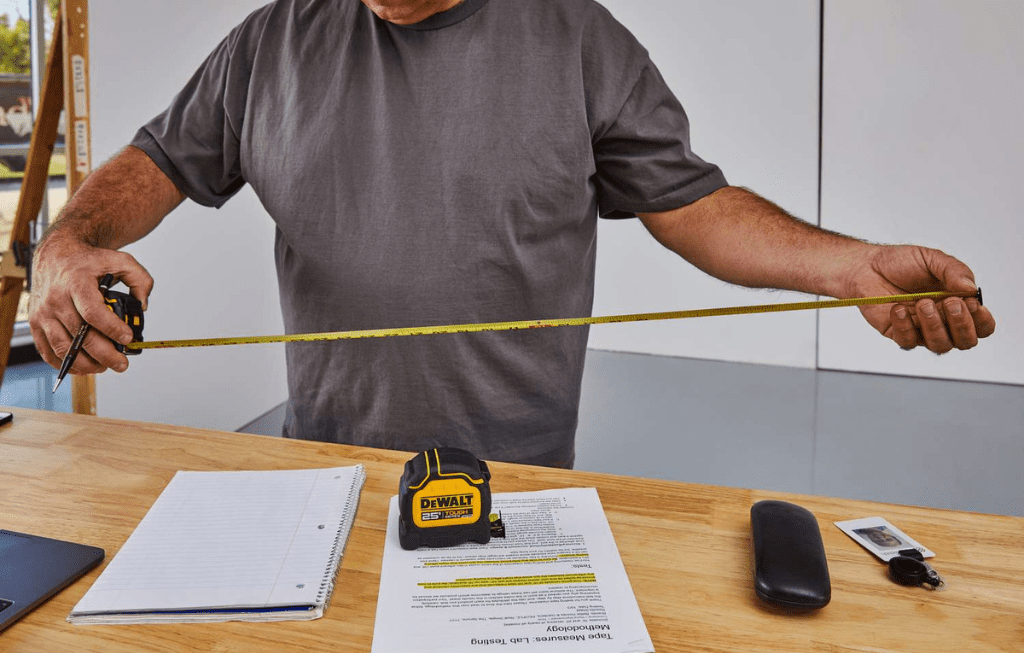This post contains affiliate links.
Accurately measuring a desk is vital for creating an efficient and comfortable workspace. Whether setting up a home office or choosing furniture for a business setting, mastering desk measurement is crucial. This article delivers the advice you need.
Discover how to precisely measure a desk, focusing on important dimensions like width, depth, and height. This guide provides clear, step-by-step directions for measuring a desk to ensure you select the ideal desk for your area.
As you read further, you’ll uncover essential tips and learn about common measuring errors to avoid.
The Basics: Understanding Desk Dimensions

When it comes to desks, three primary dimensions define their functionality and suitability for a workspace: width, depth, and height. Each of these dimensions plays a critical role in determining how well a desk will fit into a given space and how comfortable it will be for the user.
Width
The width of a desk is perhaps the most critical dimension. It dictates how much working surface area is available. Standard desk widths range from 40-48 inches for small desks, 50-62 inches for medium desks, and 65-80 inches for large desks. The width must accommodate the user’s activities, whether for a computer setup, writing, or other tasks.
Depth
Desk depth is crucial for comfort. An ideal desk depth is between 24-30 inches, providing sufficient space to work comfortably without straining the body. This space allows for the proper placement of a computer, keyboard, and mouse, ensuring that the arms can rest comfortably at the sides.
Height
Standard desk height measurements are approximately 30 inches from the floor to the lowest part of the desk’s surface. This dimension is vital for ergonomic comfort, allowing enough clearance for the user’s legs to extend properly without cramping.
The ideal size for a home office desk largely depends on your workspace, equipment, and workflow. For laptop users in tight spaces, a standard desk size of 48″ x 24″ desk is recommended. However, for more extensive setups requiring additional equipment or creative space, larger desks measuring 60″ x 30″ desk may be more suitable.
Tools and Materials Needed to Measure a Desk
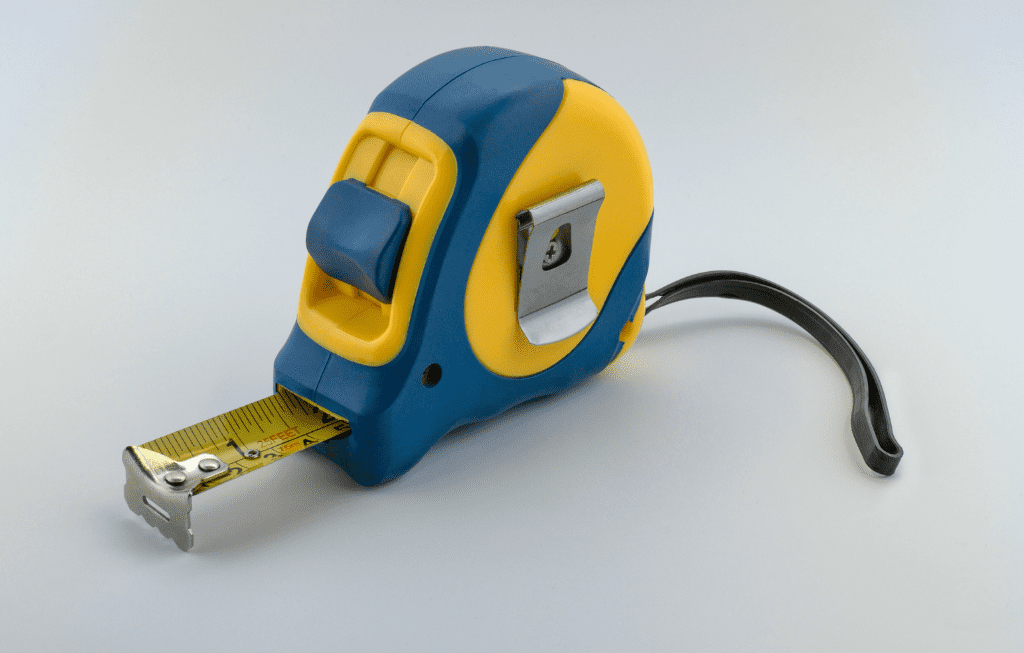
Before measuring a desk, it’s essential to have the right tools and materials on hand. The basic items you’ll need include:
- Tape Measure: To accurately measure the desk’s width, depth, and height.
- Pen and paper: To record the measurements.
- A helper: Having someone assist you with larger desks can make the process easier and more accurate.
Having these tools ready ensures a smooth and efficient measuring process.
Measuring Desk Width
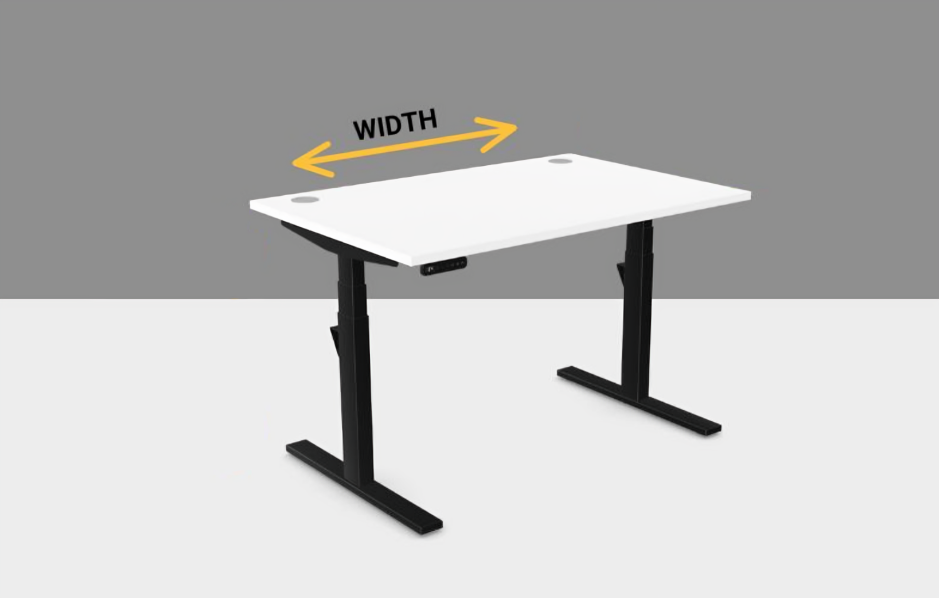
The width of a desk is arguably its most crucial dimension. It defines the working surface area available to you and can vary greatly. To measure the width of a desk:
- Positioning the Tape Measure: Start by placing your tape measure at one end of the desk’s surface.
- Measuring Across: Stretch the tape measure across the top of the desk, from one side to the other, ensuring it stays straight.
- Recording the Measurement: Note the measurement at the point where the tape reaches the opposite end of the desk. This is the desk’s width dimension.
The width of a desk is vital as it determines how much space you have for your work activities, including the placement of computer monitors, keyboards, and other essential tools.
Measuring Desk Depth
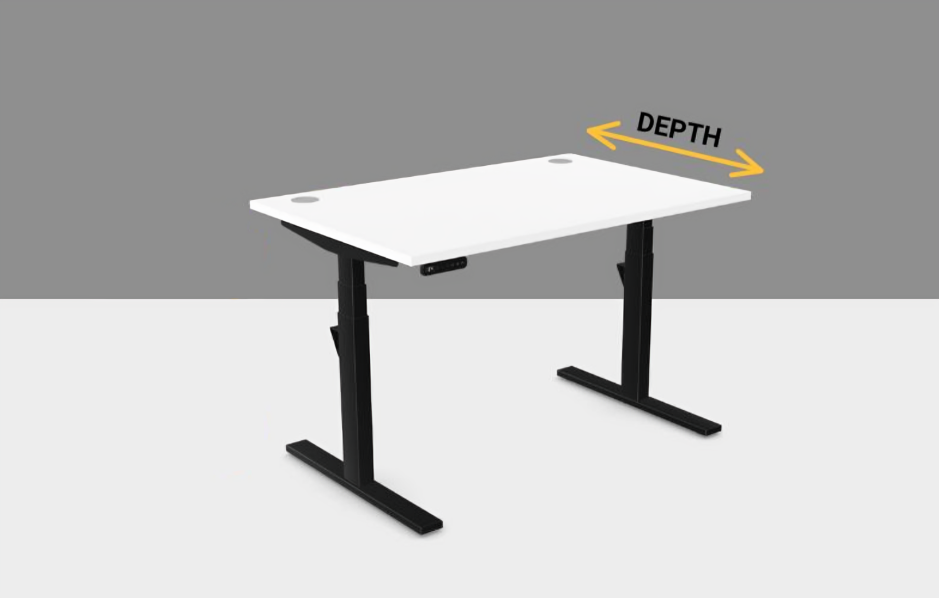
Desk depth is another significant measurement, impacting both the amount of working space available and comfort while using the desk. Here’s how to measure it:
- Starting Point: Begin at the back edge of the desk.
- Measuring Forward: Extend the tape measure from the back to the front edge of the desk’s top surface.
- Depth Measurement: The point where the tape measure reaches the front of the desk is the depth measurement.
The depth of a desk influences not only the amount of space you have for your work essentials but also affects ergonomic factors like the reach of your keyboard and mouse, which is critical for long-term comfort and preventing strain.
Measuring Desk Height
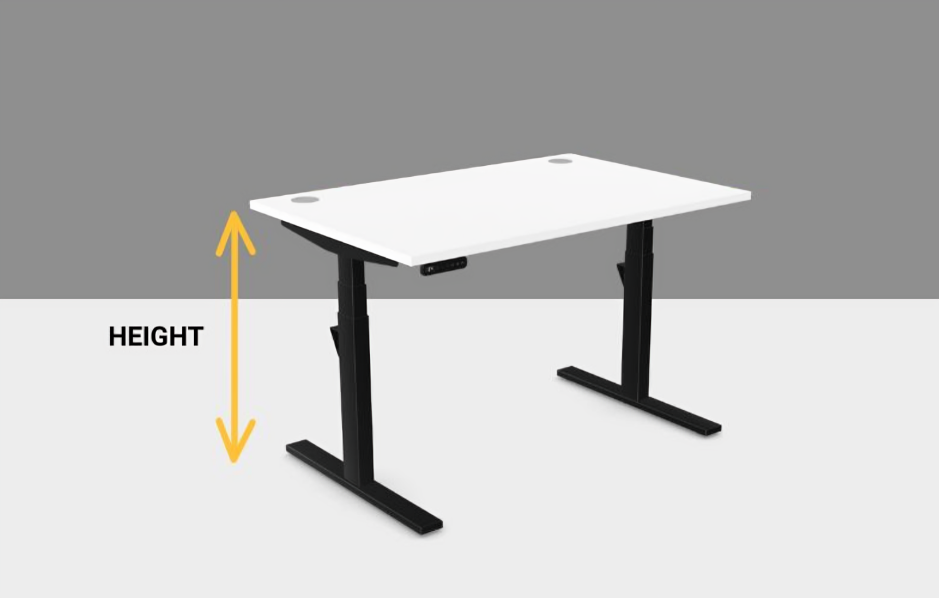
The height of a desk is essential for ergonomic comfort, affecting your posture and the potential for physical strain during prolonged use. Here’s how to measure it:
- Measuring from the Floor: Place one end of the tape measure on the floor beside the desk.
- Extending to the Desk Surface: Stretch the tape measure vertically up to the desk’s top surface.
- Height Measurement: The measurement where the tape meets the top of the desk is the desk’s height.
The standard height for most desks is around 29 inches. However, this may not be ideal for everyone. The correct desk height should allow you to sit comfortably with your feet flat on the floor and your arms at a right angle when typing.
In measuring these three dimensions – width, depth, and height – you ensure that your desk fits well in your available space and supports your comfort and efficiency. Accurate measurements are essential to creating a functional and comfortable workspace, avoiding common problems like cramped work areas or desks that don’t meet your specific needs.
How to Measure a Desk When You Don’t Have a Tape Measure
A tape measure is super handy for measuring a desk. But what if you can’t find it when you need it? No worries! You can still measure things using simple items you have around you.
I’ll show you how to use everyday stuff to measure your desk, even without a tape measure. It’s all about being clever and making the best of what you’ve got!
1. Using a Dollar Bill
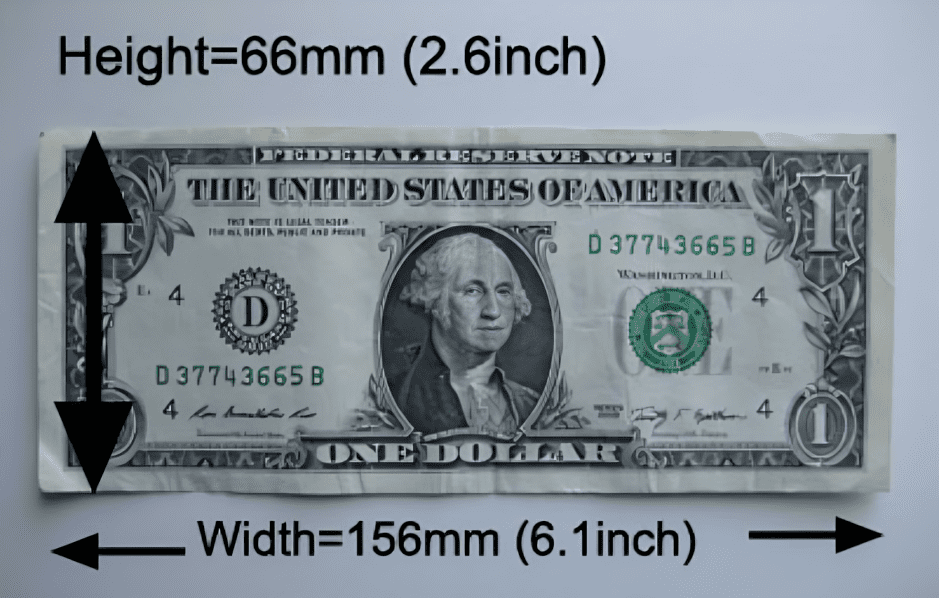
Materials Needed:
- A dollar bill (6.1 inches long and 2.6 inches tall)
Steps:
- Understand the Dimensions: The length of a dollar bill is about 6.1 inches and the height is about 2.6 inches.
- Measure Length or Width: Align the bill with one edge of the desk and mark where the bill ends. If the desk is longer than 6 inches, keep moving the bill along the length of the desk, marking each end, until you reach the other side.
- Count and Calculate:
- Count the number of full bill lengths.
- Add up the full bill lengths and the additional portion from the last, possibly folded section, to get the total measurement.
2. Using Standard Paper Sheets
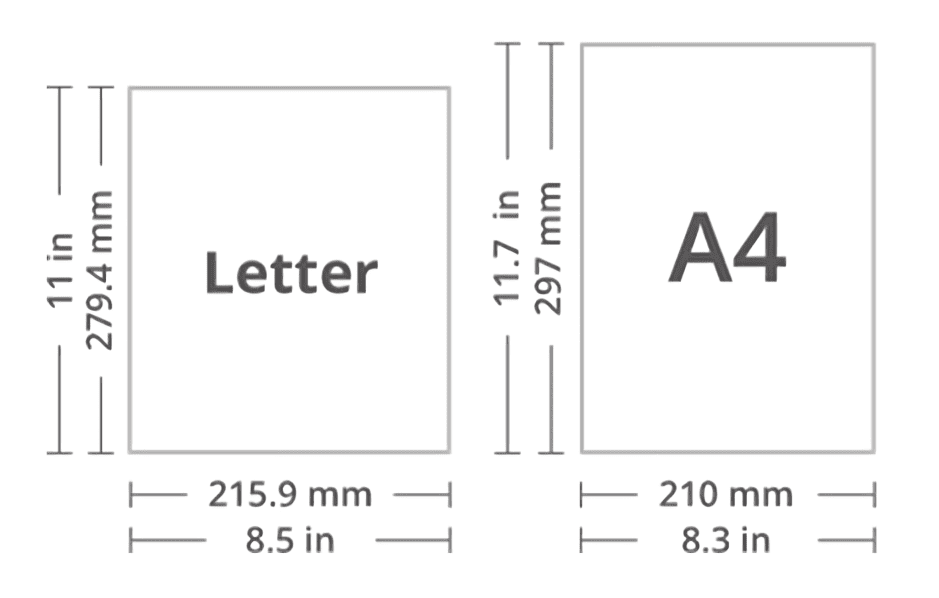
Materials Needed:
- Standard-sized paper (Letter size: 8.5 x 11 inches or A4: 8.3 x 11.7 inches)
- A pencil or pen
Steps:
- Align the Paper: Place the shorter edge of the paper at one end of the desk.
- Mark and Move: Mark where the paper ends on the desk. Move the paper to start from this point and continue until you reach the end of the desk.
- Count and Calculate: Count the number of full paper lengths. Measure any remaining distance using the paper’s known dimensions. Multiply the full lengths by the width of the paper and add the remainder to get the total measurement.
3. Using Your Own Body
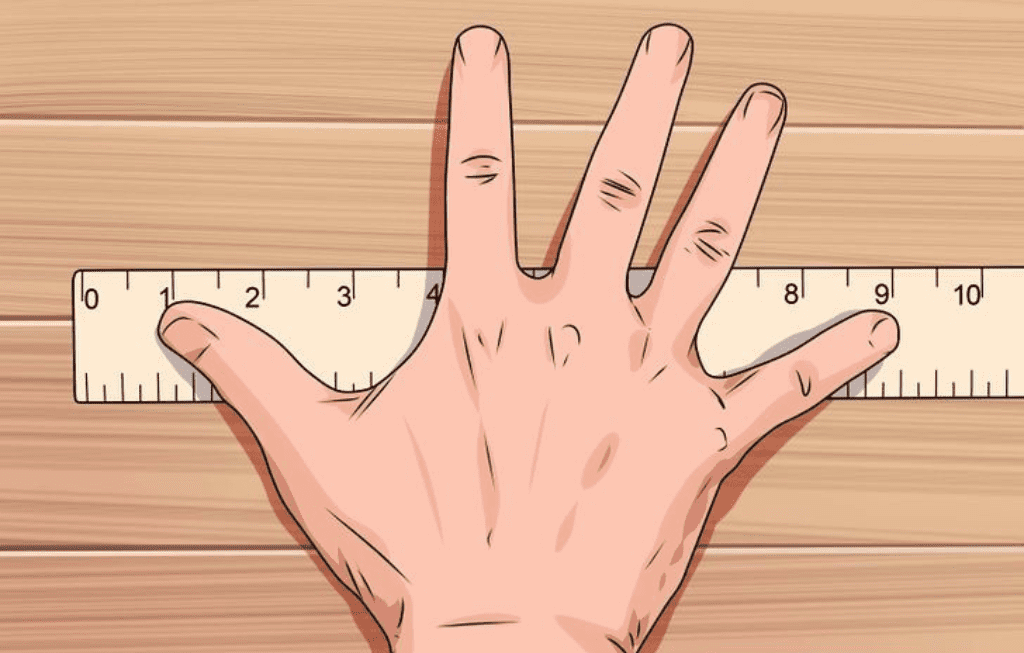
Materials Needed:
- Your hand or foot
Steps:
- Know Your Measurements: Know the approximate length of your hand span or your foot length.
- Hand or Foot Placement: Place your hand or foot at one end of the desk and note the position.
- Repeat and Count: Move your hand or foot along the desk, counting each span or step.
- Calculate Total: Multiply the number of spans or steps by the length of your hand span or foot to estimate the desk’s measurement.
4. Using a Smartphone or Tablet
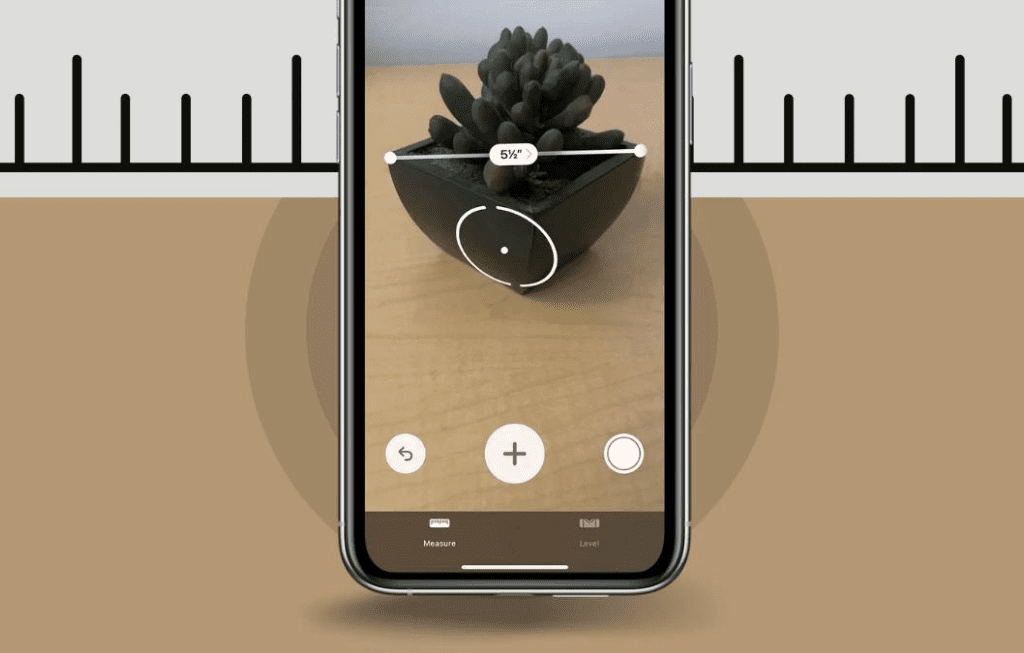
Materials Needed:
- A smartphone or tablet (with a ruler app or augmented reality measuring app)
Steps:
- Install an App: Download a reliable measuring app that uses your device’s camera to measure distances.
- Calibrate if Needed: Follow the app’s instructions to calibrate.
- Measure the Desk: Use the app to set start and end points along the desk’s dimension. The app will display the measurement on the screen.
5. Using an Envelope
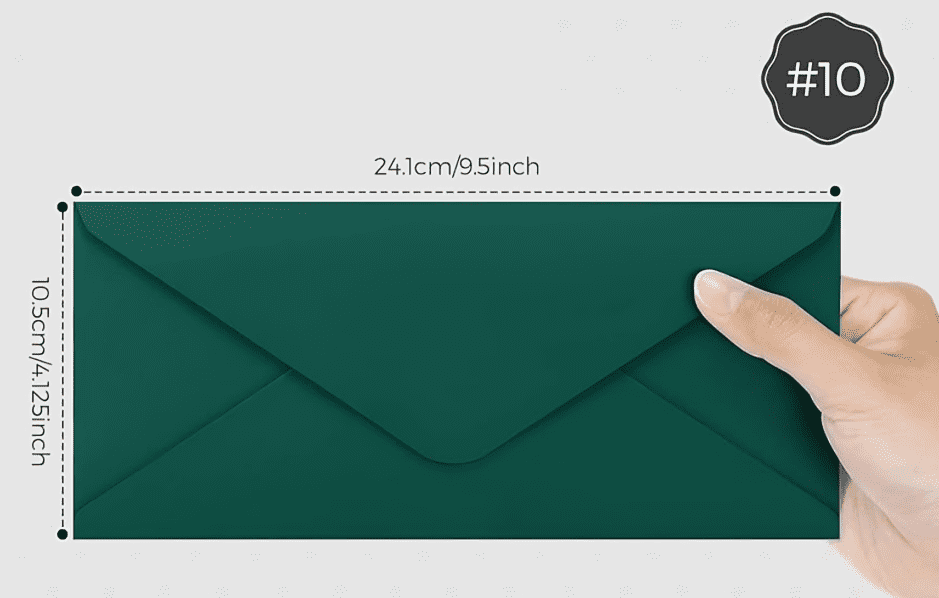
Materials Needed:
- A standard-sized envelope (know the dimensions, typically 4.125 x 9.5 inches for a #10 envelope)
Steps:
- Understand the Dimensions: Recognize the length and width of the envelope.
- Measure Length or Width: Align the envelope with one edge of the desk and mark where the envelope ends. If the desk is longer than the envelope, keep moving it along the length of the desk, marking each end, until you reach the other side.
- Count and Calculate:
- Count the number of full envelope lengths.
- Add up the full envelope lengths and the additional portion from the last, possibly folded section, to get the total measurement.
These methods provide practical and innovative ways to measure a desk when tape measure is not available.
Common Desk Measurement Mistakes to Avoid
Measuring a desk seems straightforward, but common errors can lead to problems like purchasing furniture that doesn’t fit your space. Here are some typical mistakes to avoid:
- Not Measuring All Dimensions: Focusing only on width, depth and height is insufficient. Overhangs, and clearance are also critical, especially if the desk has features like drawers or a curved shape.
- Ignoring Furniture Features: Desk features like the height of legs or extensions can impact its overall dimensions. Include these in your measurements to avoid surprises.
- Using the Wrong Units: Always use the same measurement units as the desk’s specifications. If the desk is listed in inches, measure in inches to ensure accuracy.
- Skipping the Double-Check: Always double-check your measurements, especially for custom-made furniture or when making significant layout changes. This step is crucial to avoid costly mistakes.
Minimum Desk Dimensions for Comfort
| Desk Size | Width (in) | Depth (in) | Height (in) |
|---|---|---|---|
| Small | 30-42 | 18-24 | 27-30 |
| Medium | 48-60 | 24-30 | 28-30 |
| Large | 60-72 | 30-36 | 28-30 |
These are just minimums for basic comfort. Remember, bigger is always better for optimal functionality and space.
Width
- 30 inches is the minimum for just a laptop.
- 42 inches is recommended for a basic monitor and workspace.
- 60 inches is ideal for dual monitors and extra equipment.
Depth
- 18 inches is the minimum for keyboard and mouse clearance.
- 24 inches is recommended for comfortable elbow room.
- 30 inches is ideal for additional materials and equipment.
Height
- 27 inches is the minimum for shorter individuals.
- 28-30 inches is the standard for most users.
- Adjustable desks are highly recommended for optimal ergonomics.
Before You Go…
By now, you’ve discovered some handy tricks to measure a desk without even a tape measure. Whether you’re using a dollar bill, a standard sheet of paper, or even your smartphone, measuring can be a breeze.
But there’s another aspect of your workspace that deserves equal attention – the height of your desk. If you’ve ever experienced discomfort or strain while working at your desk, my previous article is a must read.

